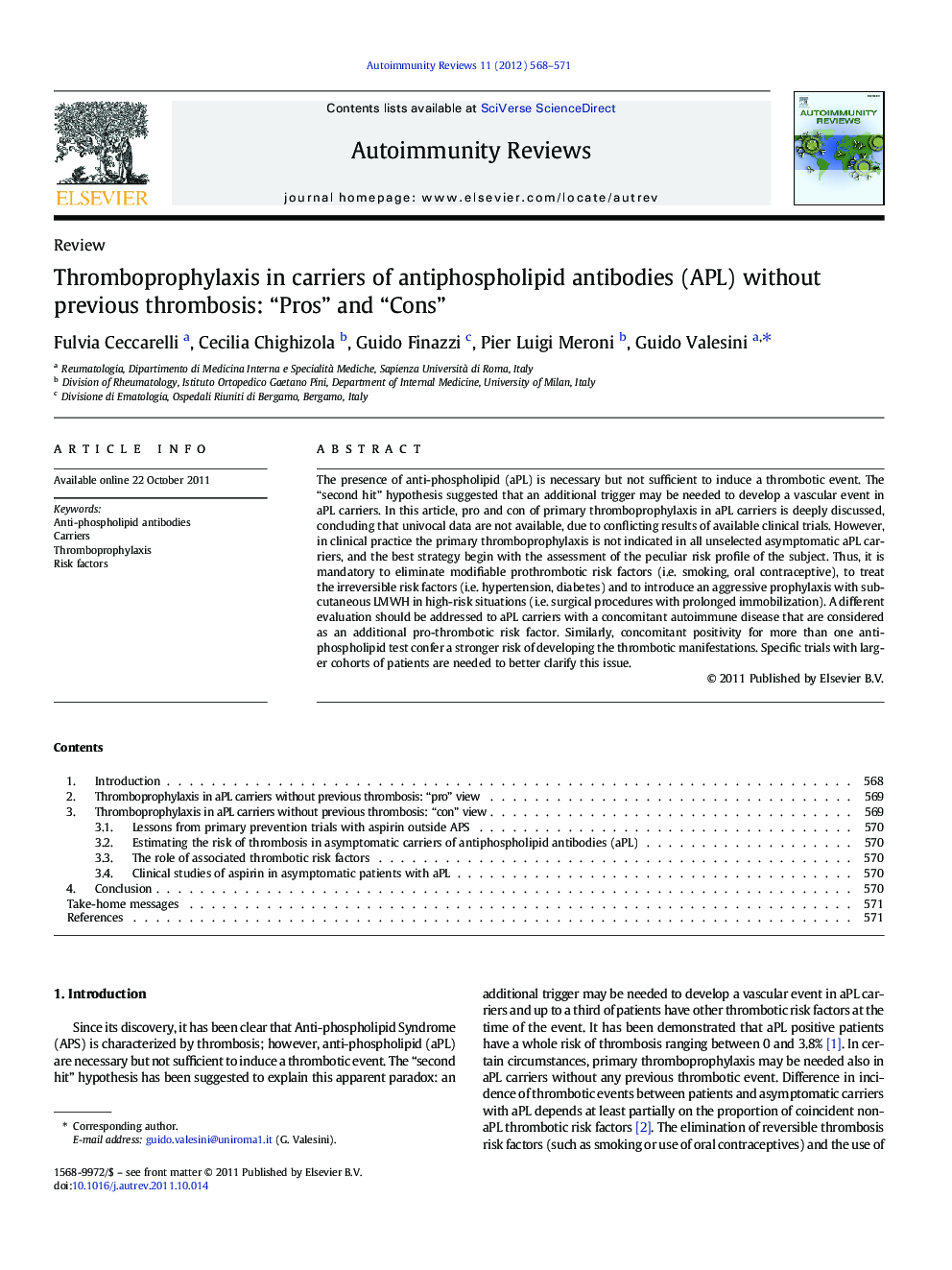| Article ID | Journal | Published Year | Pages | File Type |
|---|---|---|---|---|
| 3341895 | Autoimmunity Reviews | 2012 | 4 Pages |
The presence of anti-phospholipid (aPL) is necessary but not sufficient to induce a thrombotic event. The “second hit” hypothesis suggested that an additional trigger may be needed to develop a vascular event in aPL carriers. In this article, pro and con of primary thromboprophylaxis in aPL carriers is deeply discussed, concluding that univocal data are not available, due to conflicting results of available clinical trials. However, in clinical practice the primary thromboprophylaxis is not indicated in all unselected asymptomatic aPL carriers, and the best strategy begin with the assessment of the peculiar risk profile of the subject. Thus, it is mandatory to eliminate modifiable prothrombotic risk factors (i.e. smoking, oral contraceptive), to treat the irreversible risk factors (i.e. hypertension, diabetes) and to introduce an aggressive prophylaxis with subcutaneous LMWH in high-risk situations (i.e. surgical procedures with prolonged immobilization). A different evaluation should be addressed to aPL carriers with a concomitant autoimmune disease that are considered as an additional pro-thrombotic risk factor. Similarly, concomitant positivity for more than one anti-phospholipid test confer a stronger risk of developing the thrombotic manifestations. Specific trials with larger cohorts of patients are needed to better clarify this issue.
